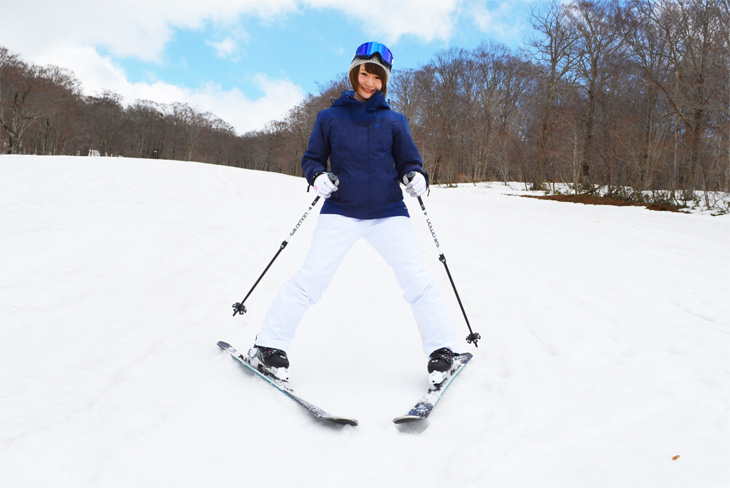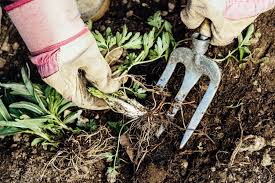How To Stop On Skis( Ultimate Steps and Guide)

How To Stop On Skis: A lifetime of winter enjoyment and a connection to the mountains may be had by learning to ski. Why should one learn to ski? Skiing has several advantages. It’s a sport that the whole family, young and old, can participate in together as well as with friends. You have access to the most spectacular mountainous terrain. In addition to raising your heart rate and burning calories, skiing also exercises your muscles.

FAQs & Answers
1, How do you stop skiing when going fast?
Making lengthy spins over the slope, sometimes known as “snow plowing,” is the greatest method to slow down. In other words, position your skis parallel to the hill’s base. Point the ski tips together in a snow plow or pizza-like position to slow oneself down even more. Enough Info
2, Skiers learning the basics use what to turn and stop.
You’ll discover how to control your speed and stop by creating a wedge with your skis after you begin moving when using skis. Triangle or pizza are other names for it. Practice a lot since you’ll be using the wedge to control your speed, stop, and make turns. How To Overcome Failure( Ultimate Guide)
3, If you’re skiing downhill, how do you stop?
The hockey stopped. Weight your left ski first and swiftly twist both of them entirely to the right, maintaining them parallel to one another rather than forming a wedge. This will turn you to the right. To retain balance, bend your knees, keep your weight over your left (downhill) ski, and keep your skis flat until you come to a halt.
Read Also: How To Deal With Anxiety(2023)
You should start by understanding why stopping is important
If you don’t know how to stop, you might easily turn into a runaway train. The first thing on your to-do list should be to learn how to snowplow; without learning this fundamental technique, you won’t be able to get very far without putting yourself or others on the slope in danger.
Be ready for a few falls at first since it’s challenging, but soon you’ll be snowplowing like a pro and moving closer to the snowplow turn stop. Before attempting to hockey stop, you should practice making your wedged turns into more of a parallel turn. The hockey stop can wait till after that.
The snow plow stop or wedge stop
The majority of skiers learn to stop using the snowplow or wedge stop method initially. It’s sometimes referred to be pizza for kids. You adopt a broad stance and spread your feet widely. Your skis are pointed in the same direction. The form of your skis will resemble a snowplow or a wedge. You will apply pressure to your outer foot to turn. You apply pressure on your right ski to make a left turn. You apply pressure on your left ski to make a right turn. You simultaneously apply pressure to both skis to halt.
When used slowly and on basic terrain like the bunny hill, this strategy performs well. The kind of terrain a rookie skier should be on. The quicker speeds and steeper slopes are less effective. Additionally, well-groomed surfaces are ideal for their use. In thick powder snow, holding your skis in a wedge is really challenging. How To Get A Business License( All you Need to Know)
When stopping during wedge skiing, you must continue pressing with both feet until you come to a complete stop. If you get weary and quit before stopping and releasing the strain on your skis, you will only accelerate once again. This is the straight down-the-fall-line wedge stop’s major flaw.
Read Also: How To Get A Promotion(Guide2023)
Some tips for snowplow stopping
Put additional weight on the front of your skis by leaning forward. More ski is in front of your boot than is in behind. Your ability to stop improves as you use more skis. You should apply pressure to your shin and the bottom of your ski boot.
Do not slouch. Overly reclined posture nearly invariably results in a quick collapse. You are leaning back too much if you feel pressure on the rear of your leg where it comes out of your ski boot. Your hands should be on your knees. You’ll have to lean forward because of this. Ski poles are truly not necessary until you are parallel-turning and mastering pole planting. They are only getting in the way up to that moment.
Turn your skis over the slope after stopping. If you don’t, they’ll continue to point downward and you’ll start to move once again. Never mind about falling. Every skier who is learning makes mistakes. One thing to boast about during après ski is having a fantastic yard sale of a fall when you lose your poles, skis, cap, and ski goggles. How Often To Water Lavender( The Ultimate Guide)
Don’t use your poles to help stop
It’s tempting to urge yourself to stop by planting your pole in the earth in front of you. You may really damage yourself by doing this. Either you will mishandle your wrists or you will ski over your pole after driving it into the ground. It’s uncomfortable to have a ski pole between your legs.
Read Also: How To Be Healthy And Active
Parallel turn stop or hockey stop
Once you master the parallel turn, alpine skiing becomes much more enjoyable and simple. You do all of these actions while keeping your skis parallel to one another. This is commonly referred to as “French fries for kids.” The ski maneuver that allows for steeper slopes and faster speeds is parallel turning. When you can ski parallel to the ground, you have achieved the status of intermediate skier. The turning maneuver used with parallel turns is known as a hockey stop or parallel turn stop.
Because it resembles the method used by hockey players to stop on ice skates, it is called a hockey stop. Fortunately, using skis rather than ice skates makes things much simpler.
To do a hockey stop you do the following
- Start by descending the ski hill while slightly hunched over as if you were about to turn.
- To unweight your skis, raise your body.
- To turn your skis parallel to the slope, rotate your feet and legs. To avoid edging when spinning, keep your skis flat on the surface.
- To slow down and halt while sliding perpendicular to the slope, put pressure on your downhill ski’s edge.
- You may slow down and stop more quickly on a downhill ski edge by putting more weight and leaning into it. How To Remove Gel Nail Extension(Step by Step)
Read Also: How To Overcome Failure( Ultimate Guide)
Here are some pointers for hockey stops
You have to pay more attention to maintaining your balance when stopping the more slippery or hard-packed snow surface. Use the inner edge of your downhill ski to stop, and your uphill ski to maintain balance. You may stop yourself by applying full force to both ski edges in powdery or soft snow.
When skiing in powder, it’s crucial to maintain balance and apply equal pressure to both skis. When skiing in powder, if you put all of your weight on one ski, it will sink into the snow, the other ski will float to the surface, and you will fall. Do not slouch. A terrific method to tumble is to lean back when parallel turning and doing a hockey stop. Maintain balance by shifting your weight slightly forward or over the middle of your skis.
It will be simpler for you to stop and turn in one way. Most people have an easier side that is dominant. It’s crucial to practice stopping skiing while making both left- and right-skiing turns. You won’t always be able to choose which direction you want to travel in difficult terrain. When you pause, you can also want to swing your upper body. You risk falling off your equilibrium if you swing your upper body around too much. Limit the rotation of your upper body with respect to the slope of your skis to perpendicular rotation.
Read Also: How To Stop Someone From Mirroring Your Phone(2023)
Snow plow or wedge turn to stop
This is a different kind of wedge stop. It involves both stopping and turning like a snowplow. In order to do this, you apply pressure to both skis, but more to one than the other. At the same moment that you stop, you also make a turn. You will slow down as you make additional turns away from the fall line and toward the hill.
The benefit is obvious. If you tire out before you come to a full stop, you are now facing up the slope rather than down. You won’t quickly accelerate back to full speed after releasing the strain on your skis. You’ll soon realize that stopping like this is nearly always preferable to just power wedging down the slope.
Due to the fact that you are now stopping and turning at the same time, this requires a bit more coordination. Before going over the slope, it’s a good idea to take a brief glance upward. It’s unpleasant to get run over by a skier or snowboarder. How To Sync Videos On TikTok(2023 Guide)
Riding out a turn to stop
Turn across the hill while traveling downhill, applying pressure on your outer ski the whole time, until you reach an uphill halt. As with every turn or halt, use your inside ski for balance. If you gain too much speed to wedge or hockey stop, this is an excellent strategy to utilize. If you still have the ability to turn, turning over the hill and upwards will rescue you. Instead of something you should do each time you stop, this is more of a panic strategy. No matter how quickly you are moving, it will halt you.
You face the danger of being run over if you turn uphill in front of a skier who is moving quickly behind you. Most seasoned skiers will recognize that the skier underneath them doesn’t seem to be in control and will steer away. Everyone ahead of you on the hill is inexperienced. You should be aware of it. Turn up the slope if you have to choose between doing so blindly and not barreling into a lift tower below you.
Additionally, you face the chance of veering off the path. Ideally, you’ll slow down before hitting the slope’s edge so that you can hockey stop or wedge. A skier stopping by riding out the turn is seen in the video below. She stumbles toward the conclusion, but you can see that it works to halt you if you start moving too quickly downward. How To Remove Tartar From Teeth Without a Dentist
Conclusion
Stopping on skis is a vital skill for any skier, as it is a key part of staying safe on the slopes and maintaining control. Knowing how to stop efficiently can help prevent serious injuries and increase overall enjoyment while skiing. With practice and the right technique, stopping on skis can be an easy and enjoyable experience.
Read Also: How To Clean A Derma Roller(Step by Step)




